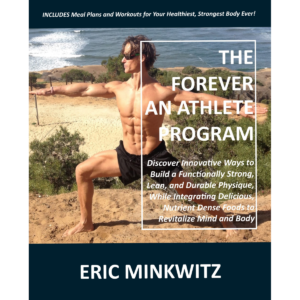Nutritional Needs According to the Demands of Your Sport (Part 1)
I am often perplexed at some of the popular “mass-appeal-diet-books” that proclaim tasty cuisine with fat burning and muscle preserving qualities. Each dietary approach may have its own merits, but oftentimes they fall short of addressing the needs of athletes. Athletes have specialized needs which include sustained energy release during competition, aggressive fluid and electrolyte replenishment, increased intake of supplements including antioxidants and amino acids, and post-workout strategies for maximizing tissue repair and recovery.
In order to address the particular needs of athletes, exercise physiologists and human performance experts are advancing beyond the study of how macronutrients deliver performance gains. Expanding research is directed at how to formulate macronutrient strategies according to the energy systems of the athletes. The goals of these strategies are to promote protein synthesis, enhance recovery, and prepare the athlete for future high intensity training bouts.
Athletic events can commonly be classified according to the primary energy system called upon by the athlete. While most team sports require a combination of the three systems, a general breakdown of each individually follows:
1. Adenosine Triphosphate Phosphocreatine System (ATP-PC), also called anaerobic-alactic training, requires explosive bursts with maximum force muscle contractions lasting 5-10 sec in duration. Examples of this type include Olympic lifting, football, volleyball, hockey, baseball, sprinting events, and weight throwing events.
2. Lactic Acid System, also called mixed anaerobic-lactic training, includes near maximal bursts from 25-90 seconds in duration. Examples include downhill skiing, basketball, hockey, football, gymnastics, and short distance events in speed skating and swimming.
3. Aerobic Energy System is involved in events requiring endurance, usually 12-60+ minutes in length. Examples include long distance cycling, running, swimming, hiking, etc.
Regardless of which athletic event is chosen, the goals of an athlete’s post-workout nutrition regimen are essentially the same. Serious athletes need a nutrition plan which:
1. Rapidly initiates the process of muscle glycogen regeneration,
2. Decreases exercise-induced muscle protein breakdown, and
3. Increases muscle protein synthesis. (Zeigenfuss T, Strength and Conditioning Journal, 2004)
However, since each athletic event demands different physiologic, metabolic and neuromuscular requirements, special nutritional considerations must be made in the areas of timing, macronutrient volume, supplementation, and speed of nutrient assimilation. My next entry will present research and distinct strategies for the three energy systems.




Leave A Comment